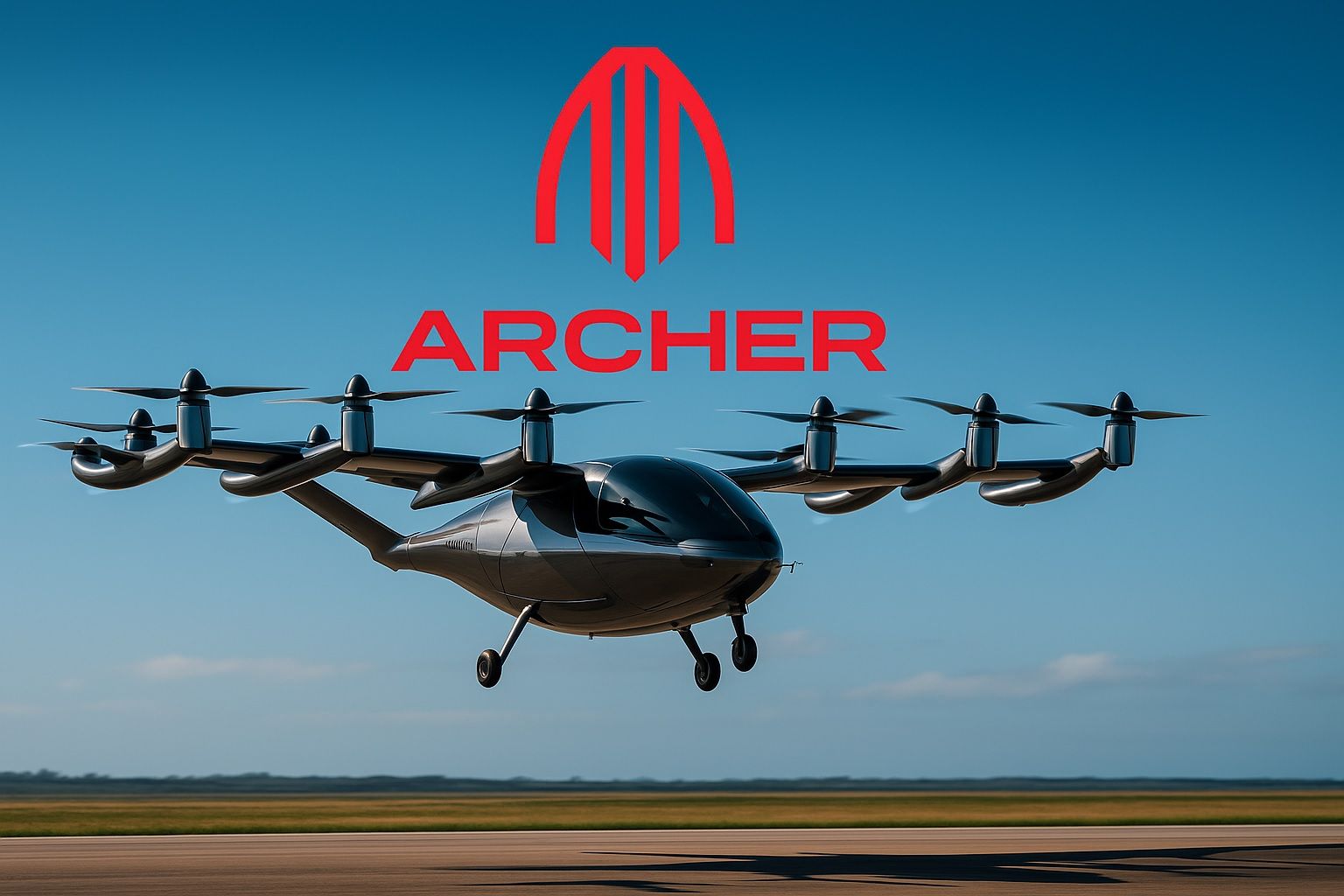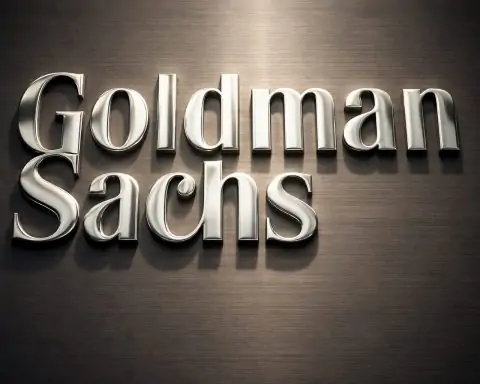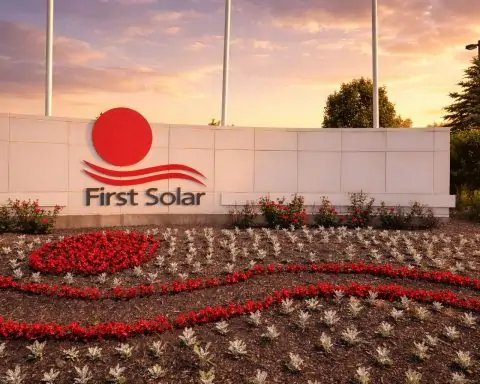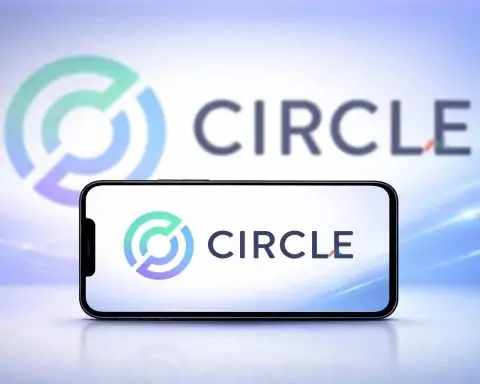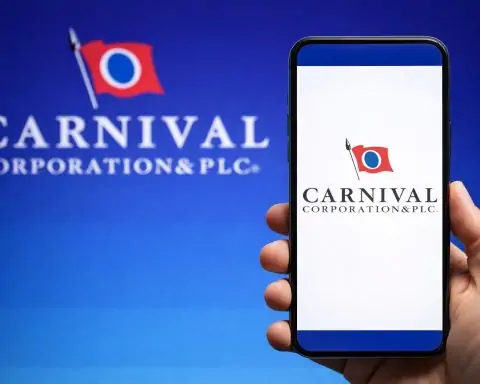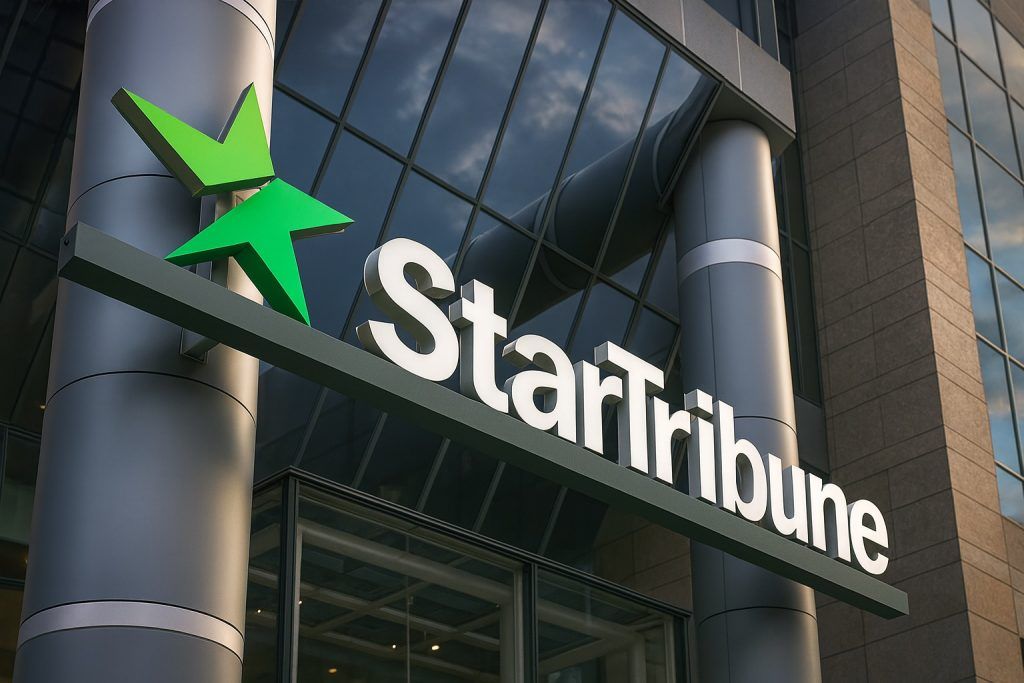Archer Aviation’s stock is riding high on fresh deals and milestones in the electric air taxi (eVTOL) arena. ACHR shares are hovering around $11 after a volatile October, buoyed by a landmark Korean Air partnership and major patent acquisitions. The company has notched FAA testing approvals and ambitious global tie-ups – from the UAE’s first vertiport to a $500M Japan order – all while amassing hefty cash reserves. Analysts mostly rate Archer a “Buy” with targets in the mid-teens, citing its technological leaps and industry alliances, though risks loom with high cash burn and intense competition. Below, we dive into Archer’s recent stock performance, key developments, expert commentary, and what’s next in the eVTOL race.
ACHR Stock on a Wild Ride 📈
Archer Aviation’s stock (NYSE: ACHR) has delivered a rollercoaster performance in recent weeks. After surging to a 2025 high in early October, shares have seen double-digit swings amid buzzing news flow. On October 3, ACHR jumped over 13% in one day, closing around $11.52 [1]. A further 18% spike the following week pushed shares above $13.50, their highest levels of the year [2]. This rally flipped Archer’s year-to-date return positive – as of late October, the stock is up roughly 20% in 2025, vastly outperforming the broader market [3]. Even more striking, Archer has gained about 270% from a year ago, reflecting the eVTOL hype fueling “flying car” stocks [4].
That momentum, however, comes with volatility. After peaking, ACHR pulled back on profit-taking – sliding nearly 9% over Oct. 21–22 [5]. Shares closed at $10.86 on Oct. 22 [6], then ticked up in pre-market trading on Oct. 23. Traders have weathered big swings tied to speculation (e.g. unfounded Tesla partnership rumors) and secondary offerings [7]. “Archer has been capturing eyes on the market floor,” one financial commentator noted, amid heavy volumes and a meme-stock-like fervor for futuristic transport [8]. At around $11 per share, Archer commands a ~$7 billion market cap – a valuation based more on future potential than present earnings, given the company’s zero revenue so far [9].
Korean Air Deal Lifts Shares 🚀
The latest catalyst came on October 20, when Archer announced a partnership with Korean Air to commercialize its Midnight electric air taxis in South Korea [10]. The flagship Korean carrier secured rights to purchase up to 100 Midnight eVTOL aircraft – Archer’s first major airline customer in Asia. News of this “landmark” deal sent ACHR stock climbing roughly 5–6% intraday as investors cheered the validation by a global airline [11] [12]. CEO Adam Goldstein hailed Korean Air’s “aerospace expertise and strategic vision” and called the exclusive collaboration “a major credibility boost” for Archer’s expansion in one of the world’s top aviation markets [13].
Analysts likewise saw the move as a “major validation for Archer’s technology and business model,” suggesting Archer is emerging as an eVTOL front-runner [14]. The Korean Air agreement underscores an intensifying race to lock in airline partners and regulator buy-in for urban air mobility [15]. Korean Air – with five decades of aerospace experience – will help Archer deploy Midnight vehicles across various use cases, initially focusing on government and emergency applications in Korea [16]. South Korea’s transport ministry has declared advanced air mobility a national priority, paving the way for urban air taxi services in the coming years [17]. For Archer, this deal not only promises a foothold in Asia but also boosts its credibility as airlines worldwide vet eVTOL providers.
Notably, Archer’s Midnight aircraft is designed for quick hops of 10–20 minutes – transforming an hour-long drive into a short, zero-emissions flight. Recent test flights highlight Midnight’s capabilities: in September, a piloted Midnight prototype flew 55 miles in 31 minutes, reaching 10,000 feet altitude [18]. These are among the highest, longest eVTOL flights on record, demonstrating performance headroom to meet real-world demands. Korean Air plans to leverage its maintenance and operations know-how to support Midnight’s rollout once regulators green-light service. Initial deployments in Korea may involve emergency transport or military logistics before broader air-taxi routes open to the public [19] [20].
Big Wins: Patents, Vertiports and Verticals 🌐
Archer’s Korean foray comes on the heels of several other strategic wins. Just days earlier, the company outbid rivals to acquire ~300 patents from bankrupt German eVTOL startup Lilium GmbH [21]. Archer is paying €18 million (about $21M) in a bankruptcy auction for Lilium’s intellectual property – spanning advanced battery systems, aircraft designs, flight control software and more [22]. The purchase expands Archer’s IP portfolio to over 1,000 patents [23]. Investors greeted the Oct. 15 announcement as bullish, sending ACHR stock up ~8.5% that day [24]. Industry experts say consolidation is inevitable in this cash-hungry sector, and Archer’s grab of Lilium’s tech could accelerate its R&D while neutralizing a would-be competitor [25]. It also highlights a widening gap between winners and losers: even well-funded players like Lilium raised $1.5B only to falter before commercialization, underlining Archer’s execution so far [26] [27].
In the Middle East, Archer is laying groundwork for real-world eVTOL services. In early October, Cleveland Clinic Abu Dhabi announced plans with Archer to build the UAE’s first hospital-based “vertiport” – upgrading the hospital’s helipad to accommodate Midnight air taxis for patient transport and organ deliveries [28] [29]. This follows Archer’s first vertiport at Abu Dhabi’s main cruise terminal and is part of an exclusive launch program aiming to kickstart air taxi ops in the Gulf by 2026 [30]. The vision: connect critical “pillars of life” like hospitals via airborne shuttles, with UAE regulators actively updating rules to allow mixed-use heliports for drones, air taxis and helicopters [31].
Beyond the Middle East, Archer’s global presence is expanding rapidly. Japan’s Osaka Prefecture in late September selected Archer (and its local JV partner Soracle, backed by Japan Airlines and Sumitomo) to develop urban air taxi services for the Osaka-Kansai region [32]. Soracle secured rights to order up to 100 Midnight aircraft ( ~$500M value) to serve cities like Osaka and Tokyo [33] [34]. This ranks among the largest eVTOL orders to date and signals strong confidence in Archer – especially notable as the deal was inked before Archer has even begun commercial service [35]. Japanese officials have been actively courting eVTOL, with Japan’s transport minister visiting Archer’s California HQ to discuss nationwide air-taxi rollout plans [36].
The newly announced Korean Air deal cements Archer’s Asia expansion, adding South Korea to a launch list that already includes Japan and the UAE [37]. Archer is also eyeing other regions: earlier this year it struck a deal in Indonesia for up to 50 Midnight aircraft ($250M) aimed at connecting the country’s far-flung islands [38]. Even Africa is on the map – Archer has floated partnerships to launch in Kenya and Ethiopia, suggesting emerging markets may leapfrog with air mobility tech [39].
Back home in the United States, Archer enjoys high-profile backing and pilot programs. United Airlines is not only an investor but plans to deploy Midnight for short-haul airport shuttles (e.g. ferrying travelers from city heliports to major hubs) [40]. Stellantis – the automaker behind Jeep and Chrysler – has invested in Archer and is co-building its new Georgia factory, slated to mass-produce Midnight starting in 2025 [41]. Archer even inked a memorandum with Southwest Airlines to explore using eVTOLs for airport connections in California [42]. And in a high-profile nod, Los Angeles named Archer the official air taxi provider for the 2028 Summer Olympics, meaning if all goes to plan, VIPs (and potentially spectators) could be flying across LA in Archer vehicles during the Games [43].
Crucially, Archer isn’t just pursuing commercial markets – it has a military angle too. The U.S. Air Force awarded Archer an “Agility Prime” contract worth up to $142 million to test its Midnight aircraft for defense use-cases like cargo delivery and rescue missions [44]. In fact, Archer delivered its first Midnight eVTOL to the USAF in late 2024 as part of this program, after the Pentagon granted the craft a military airworthiness assessment [45] [46]. U.S. Air Force teams have since been working with Archer’s pilots to evaluate Midnight in simulated missions (medical evacuation, reconnaissance, etc.) as the military explores how such aircraft could enhance operational capabilities [47] [48]. This defense collaboration, alongside its airline and government partnerships, gives Archer a broad strategic footprint (from flag carriers to the Pentagon) well before its first commercial flight takes off [49].
Race for eVTOL Dominance ✈️
Archer’s flurry of deals underscores the intensifying race in the eVTOL industry. More than a dozen companies worldwide are vying to be first-to-market with a certified passenger air taxi [50]. Notable rivals include Joby Aviation in California – backed by Toyota and Delta Air Lines – which is slightly ahead in the U.S. certification process (Joby’s prototype is in stage 4 of 5 with the FAA and has logged 40,000+ test flight miles) [51]. In China, competitor EHang has secured pioneering regulatory approvals: its pilotless two-seater eVTOL became the world’s first to receive a full type certificate and is already starting limited commercial flights [52]. Europe’s Vertical Aerospace and Volocopter are also in the mix, while aerospace titans Airbus and Boeing (the latter a key Archer backer) are investing in the sector [53].
This landgrab for patents, partners, and market share explains why Archer’s aggressive moves – from acquiring Lilium’s tech to aligning with top airlines – are seen as critical to securing a lead [54]. As Archer CEO Goldstein candidly noted after Lilium’s bankruptcy, the shake-out “reinforces that what we are doing is very hard” [55]. Indeed, the industry faces steep hurdles: funding and cash burn challenges, technological complexities, infrastructure needs (think vertiports and charging), and above all, regulatory certification. No eVTOL has yet been fully certified by the U.S. Federal Aviation Administration, and certification timelines have slipped from the mid-2020s toward late this decade as authorities craft new rules for this novel class of aircraft [56] [57].
Archer is in the thick of the FAA’s rigorous process. In 2025, the FAA issued Archer a Special Airworthiness Certificate and a Type Inspection Authorization (TIA) – clearances that allow FAA officials to begin flying and evaluating Midnight themselves [58] [59]. Securing the TIA was a key milestone toward full type certification, which Archer tentatively aims to achieve by 2025 or 2026 [60] [61]. Once certified, Archer can launch commercial passenger service in the U.S., with the company optimistically targeting late 2025 for an initial launch (potentially in Dubai or Abu Dhabi first, with U.S. cities following by 2026) [62].
Regulators are cautiously supportive of eVTOL progress. In Washington, the government rolled out an eVTOL Integration Pilot Program (eIPP) to allow limited trial operations of air taxis even before full certification [63]. Archer announced it will participate in these pilot programs alongside United Airlines and several U.S. city partners [64] [65]. And in June 2025, the White House signed an executive order to “unleash” advanced aerial mobility, directing agencies to cut red tape for drones and air taxis and fund real-world pilot projects (for example, using eVTOLs in emergency medical evacuations) [66]. That pro-innovation stance sparked a mini-rally in eVTOL stocks – Archer’s shares jumped ~7% on the policy news [67]. Still, regulators emphasize safety above all. As JPMorgan analyst Bill Peterson noted, certifying passenger eVTOLs is a “heavy lift” – these startups must prove not only that their aircraft can fly, but that they can do so as reliably and safely as commercial airliners [68]. Until then, widespread urban air taxi service remains a hopeful horizon.
Wall Street’s View: High Hopes and Hurdles 💡
Despite the unknowns, Wall Street analysts are broadly bullish on Archer’s long-term trajectory. Most firms covering ACHR rate it a Buy. In fact, 7 of 9 analysts recently tracked give Archer a thumbs-up, yielding a “Moderate/Strong Buy” consensus [69]. Price targets vary widely – from as low as ~$4.50 up to a bullish ~$18 – reflecting differing risk appetites [70]. The average 12-month target sits in the mid-$12s, roughly in line with the current stock price [71]. Optimistic analysts point to Archer’s tangible progress: successful flight demonstrations, a growing backlog of aircraft orders, and a war chest of about $1.7 billion in cash (as of mid-2025) to fund development [72]. That cash buffer, bolstered by recent fundraising ($300M in early 2025 and $150M more in Sept 2025), should help Archer reach certification and initial production [73].
However, not everyone is on board the hype flight. A few analysts urge caution – for instance, Barclays initiated coverage with a Hold and a mere $4.50 target, essentially betting that the stock had overshot reality [74]. Zacks Investment Research even flagged Archer as a Sell recently [75], emphasizing that despite momentum, the company’s fundamentals haven’t caught up. It’s easy to see the cause for concern: Archer remains pre-revenue and deeply unprofitable, with no certainties on when meaningful income will arrive. The company expects a Q3 2025 adjusted EBITDA loss of $110–130 million, wider than its $93M loss in the same quarter last year [76]. R&D and testing expenses are high – Archer burned over $100M last quarter – and zero sales are coming in to offset those costs [77]. No eVTOL startup is profitable yet, and many (like Lilium) have already burned through hundreds of millions with little to show [78].
The broader market context tempers some of the optimism. Analysts project the urban air mobility sector to grow from ~$1.3 billion in 2024 to around $7.7 billion by 2033, as the concept of flying taxis moves from sci-fi to reality [79]. Archer could capture a slice of that multibillion market if it executes well. Yet, enormous execution risks remain. Certification delays, infrastructure build-out, public acceptance, and competition from deep-pocketed rivals all threaten the dream. Investors in Archer and peers are essentially placing a binary bet: either these companies secure approval and early mover advantage – potentially yielding sky-high rewards – or the challenges prove insurmountable, in which case today’s lofty valuations could come crashing down [80]. As one outlet noted, 2025’s surge in eVTOL stocks like Archer and Joby has at times taken on a meme-stock vibe, while Lilium’s collapse is a sobering reminder of how quickly fortunes can flip in this unproven industry [81].
Outlook: Clear Skies or Turbulence Ahead? 🔮
As of late October 2025, Archer Aviation stands at the threshold of a new era – both for the company and for urban transportation at large. In the next 12–24 months, Archer aims to finalize FAA certification, ramp up manufacturing, and possibly begin limited air taxi services in select markets. Achieving those milestones could further validate the company’s technology and unlock revenue from aircraft sales, rides, and support services. Archer’s partnerships – with airlines, automakers, city governments, and the military – position it strongly to capitalize on an aerial mobility revolution if one materializes.
Yet it bears repeating: no guarantees exist in this nascent market. Archer must navigate a high-wire act of scaling production, ensuring safety, and convincing regulators and the public to embrace battery-powered aircraft flying above cities. Any mishap or delay – whether a testing setback, a regulatory hurdle, or a funding squeeze – could rattle investor confidence in a heartbeat. The eVTOL dream promises to “electrify the skies”, but the path to get there is riddled with technical and financial turbulence.
For now, Archer’s stock is flying high on hope and headlines. The company’s bold bets – from the Korean Air deal to grabbing Lilium’s IP – suggest it is determined to lead the pack. If Archer can continue converting ambitious plans into concrete results, it may indeed justify the bulls’ faith. In the meantime, retail investors and aviation enthusiasts alike will be watching closely, as Archer Aviation attempts to turn its sky-high ambitions into a tangible, profitable reality.
Sources: Reuters [82] [83]; TechStock² [84] [85]; Archer Investor Relations [86]; MarketBeat [87]; Tokenist [88]; AeroNews [89]; Benzinga [90]; others
References
1. ts2.tech, 2. stockanalysis.com, 3. ts2.tech, 4. ts2.tech, 5. stockanalysis.com, 6. stockanalysis.com, 7. ts2.tech, 8. ts2.tech, 9. ts2.tech, 10. www.reuters.com, 11. ts2.tech, 12. www.reuters.com, 13. ts2.tech, 14. ts2.tech, 15. www.reuters.com, 16. ts2.tech, 17. ts2.tech, 18. ts2.tech, 19. ts2.tech, 20. ts2.tech, 21. ts2.tech, 22. ts2.tech, 23. ts2.tech, 24. ts2.tech, 25. ts2.tech, 26. ts2.tech, 27. ts2.tech, 28. ts2.tech, 29. ts2.tech, 30. ts2.tech, 31. ts2.tech, 32. ts2.tech, 33. ts2.tech, 34. www.reuters.com, 35. ts2.tech, 36. ts2.tech, 37. ts2.tech, 38. ts2.tech, 39. ts2.tech, 40. ts2.tech, 41. ts2.tech, 42. ts2.tech, 43. ts2.tech, 44. ts2.tech, 45. investors.archer.com, 46. investors.archer.com, 47. investors.archer.com, 48. investors.archer.com, 49. ts2.tech, 50. ts2.tech, 51. ts2.tech, 52. ts2.tech, 53. ts2.tech, 54. ts2.tech, 55. www.reuters.com, 56. www.reuters.com, 57. www.reuters.com, 58. ts2.tech, 59. ts2.tech, 60. ts2.tech, 61. ts2.tech, 62. ts2.tech, 63. ts2.tech, 64. ts2.tech, 65. ts2.tech, 66. ts2.tech, 67. ts2.tech, 68. ts2.tech, 69. ts2.tech, 70. ts2.tech, 71. ts2.tech, 72. ts2.tech, 73. ts2.tech, 74. ts2.tech, 75. ts2.tech, 76. www.reuters.com, 77. ts2.tech, 78. ts2.tech, 79. ts2.tech, 80. ts2.tech, 81. ts2.tech, 82. www.reuters.com, 83. www.reuters.com, 84. ts2.tech, 85. ts2.tech, 86. investors.archer.com, 87. ts2.tech, 88. ts2.tech, 89. ts2.tech, 90. ts2.tech
